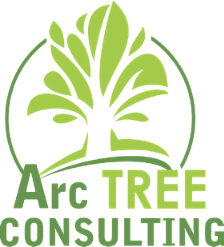Trees are often retained during land development because of the social, economical and environmental benefits they provide. It is important to note that tree retention without proper tree preservation planning is rarely a successful endeavor in the long term.
A successful tree preservation effort during land development is fully integrated with the project through all phases: planning, design, site preparation, construction, landscaping and after-care. Establishing a Tree Protection Zone (example pictured above) prior to the construction phase is an important component of tree preservation, but it is only one small step in the overall process.
Which trees should be preserved?
Generally, trees selected for preservation have good condition ratings, are tolerant of site disturbances and do not pose conflict with key design elements. However, special considerations may need to be given to trees with unique specimen qualities, historic importance or other community significance. Identification of such trees during the project planning phase is critical to success, since preservation techniques may influence project design elements.
 Design Phase
Design Phase
This is where tree resource evaluation meets tree management planning. Final decisions are made to see how the project will integrate with preservation efforts. In some cases, project design elements may be changed to integrate existing trees. In other cases, key project design elements may so greatly reduce tree survivability chances that preservation efforts are considered ineffective or too costly, and removal should be recommended.
Construction Phase
Prior to breaking ground, appropriate Tree Protection Zones (TPZs) must be established, posted and enforced. Regular site monitoring and communications between site superintendent and project arborist are key for preservation success.
After-Care Phase
Often overlooked during preservation planning is the after-care program to mitigate stresses from the construction phase. Some stresses may be anticipated such as water deficit from reduced soil volume and root removal or unanticipated, like equipment damage to trees during Tree Protection Zone violations. Provisions should be made for all preserved trees in the landscape to be regularly monitored, evaluated and maintanined for at least the first few years following project completion.

